Key takeaways:
- REST is ideal for straightforward applications with well-defined resources, offering predictable access and effective caching strategies.
- GraphQL excels in flexibility and efficiency, particularly for applications with complex data relationships or where minimizing requests is critical, like mobile apps.
- Performance can be significantly enhanced by choosing the right API architecture, with GraphQL reducing unnecessary data transfers and REST benefiting from caching strategies.
- Real-world applications demonstrate that adopting GraphQL can transform user experience and developer productivity by streamlining data fetching and minimizing endpoint management.
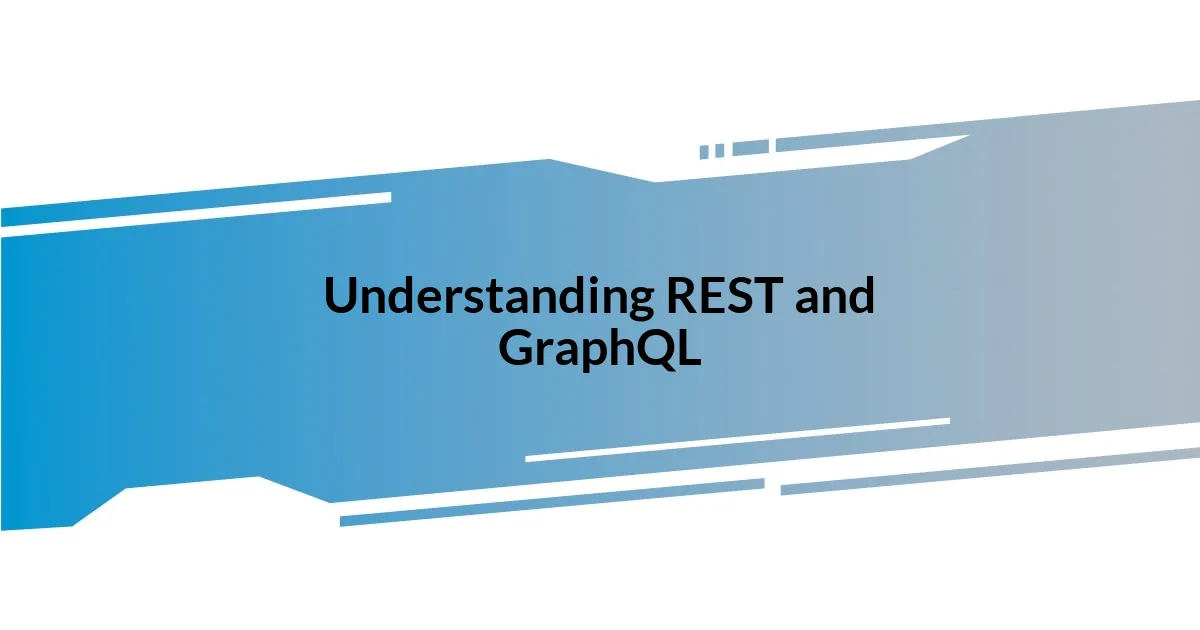
Understanding REST and GraphQL
REST, or Representational State Transfer, is like a well-organized library. Each book in this library represents a different resource, and you access it through a specific aisle – that’s the endpoint. I’ve often felt a sense of comfort in the predictability of REST’s structure, knowing that each request corresponds to a defined resource type.
GraphQL, on the other hand, feels like having a personal librarian who understands exactly what I need and can fetch it all at once. I remember a project where traditional REST APIs made me juggle multiple requests just to get what I wanted. Isn’t it frustrating when you have to fetch different pieces of data from various endpoints? With GraphQL, I could define my data requirements more flexibly, and it felt like a weight lifting off my shoulders.
Both approaches have their advantages. REST is straightforward and adheres to established standards, making it easier for newcomers to grasp. Yet, GraphQL offers a level of efficiency and customization that truly resonates with developers who crave control. When I reflect on my experiences with both, I realize that the choice often hinges on the specific needs of the project at hand. Which approach do you find aligns better with your own development philosophy?
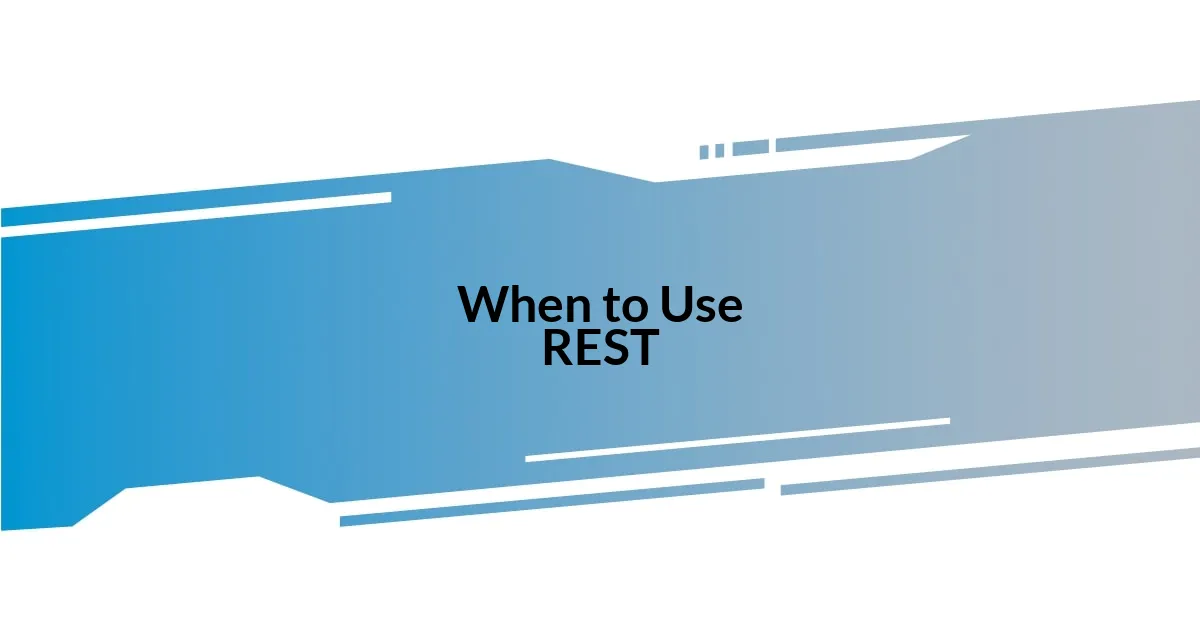
When to Use REST
Using REST is an excellent choice when you’re dealing with straightforward applications that require a clear and consistent structure. In my experience, projects with well-defined resources, like e-commerce sites, benefit from REST’s predictable nature. Imagine building a shopping cart API where each item can easily be accessed through a dedicated endpoint—it’s efficient and logical.
I’ve found REST particularly powerful in scenarios where caching is crucial. For instance, when developing a weather application, frequent calls to the same endpoints can be cached, significantly reducing load times and server requests. This reliability is a game-changer when the performance of your application is on the line.
Moreover, REST is widely supported and understood, making it a safer choice for teams that might include less experienced developers. When I introduced REST APIs to junior developers, they often felt more comfortable navigating its conventions. It’s quite rewarding to witness their growing confidence as they engage with this technology.
| When to Use REST | Characteristics |
|---|---|
| Simple CRUD Applications | REST’s structure is ideal for Create, Read, Update, Delete operations. |
| Consistent Data Access | You access resources in a predictable manner through defined endpoints. |
| Cache Mechanism | REST supports caching directly at the server and client levels. |
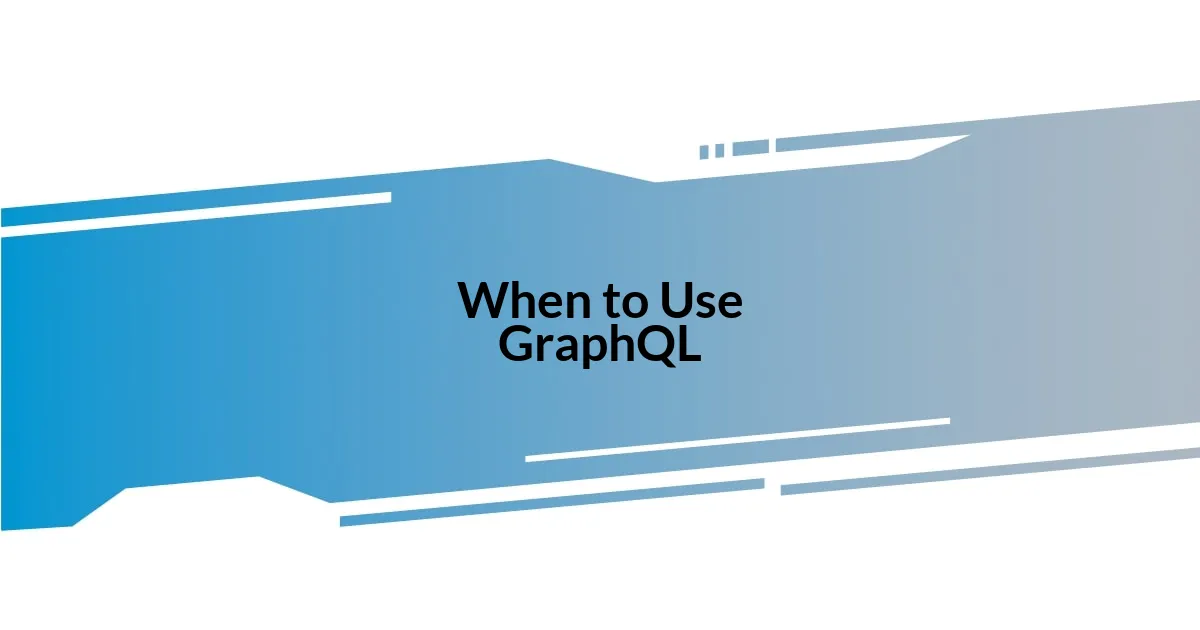
When to Use GraphQL
When considering GraphQL, it truly shines in scenarios requiring flexibility and efficiency. I’ve worked on applications where the data shape was constantly changing, and I found GraphQL was a perfect fit. It allowed me to adapt my queries dynamically, ensuring that I got precisely the data I needed without the overhead of handling multiple endpoints. The convenience of making a single request, with only relevant data returned, is a refreshing change that can streamline development significantly.
Top Scenarios for Using GraphQL:
- Complex Data Relationships: When your application has intricate or deeply nested data structures, GraphQL allows you to query exactly what you need in one go, reducing the complexity of multiple API calls.
- Rapid Iteration: If you’re developing a product that requires fast iterations and changes, GraphQL’s flexibility means you can evolve your API alongside your application without breaking existing queries.
- Mobile Applications: For mobile development, where network performance is critical, minimizing the number of requests is essential. GraphQL helps optimize this by fetching everything in a single request.
- Different Client Needs: When building a service that might cater to various clients (like web apps, mobile apps, or third-party integrations), GraphQL can satisfy these varying needs with its ability to customize query responses.
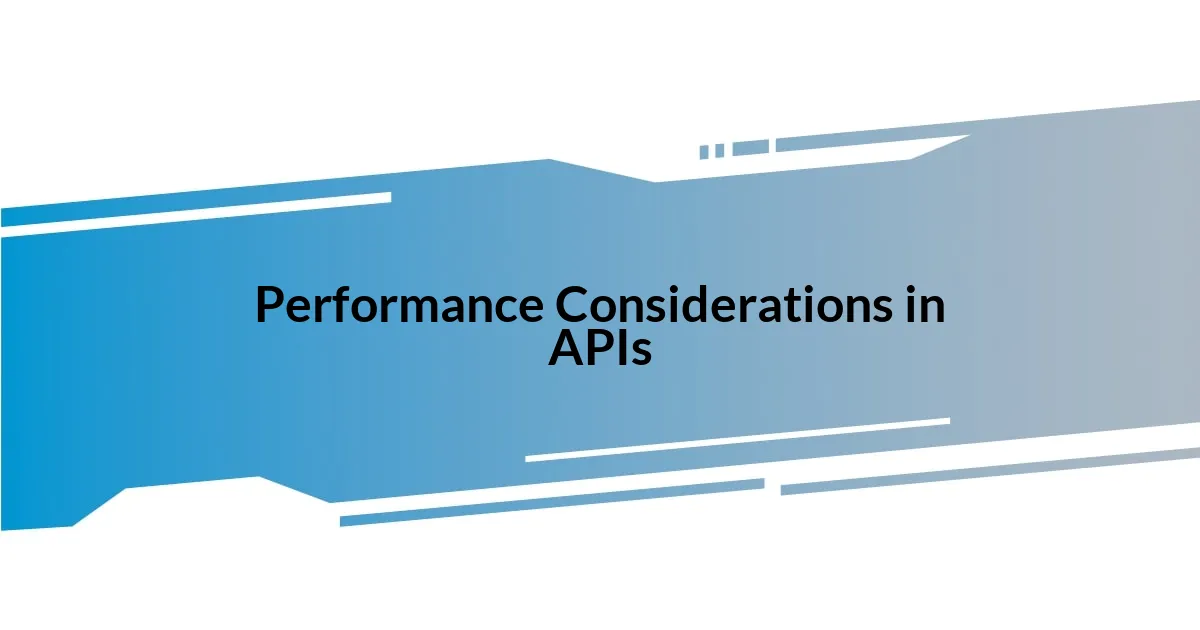
Performance Considerations in APIs
When it comes to performance considerations in APIs, I can’t stress enough the impact of data retrieval methods. For instance, in a project I was involved with, I realized that accessing multiple endpoints with REST led to significant delays. It was a real eye-opener when we switched to a more optimized approach, and our load times improved dramatically. Isn’t it fascinating how a single architectural choice can influence the user experience so profoundly?
Caching strategies also play a pivotal role in API performance. I remember integrating a caching layer into a RESTful service we built for a news aggregator. We saw an immediate effect—response times dropped, and the server load diminished. Engaging with real-time data is essential, but there’s something so comforting about knowing that frequently accessed information can be served up quickly, isn’t there?
On the other hand, when developing with GraphQL, I often appreciate how it minimizes unnecessary data transfers. There was a moment in my career where I worked on a travel app that required users to pull a variety of information about their trips. Instead of fetching the entire dataset, GraphQL allowed me to structure the queries precisely. That feeling of efficiency—returning only what was needed—was a game-changer for both performance and user satisfaction. Don’t you think it’s empowering to provide users with what they want without the extra baggage?
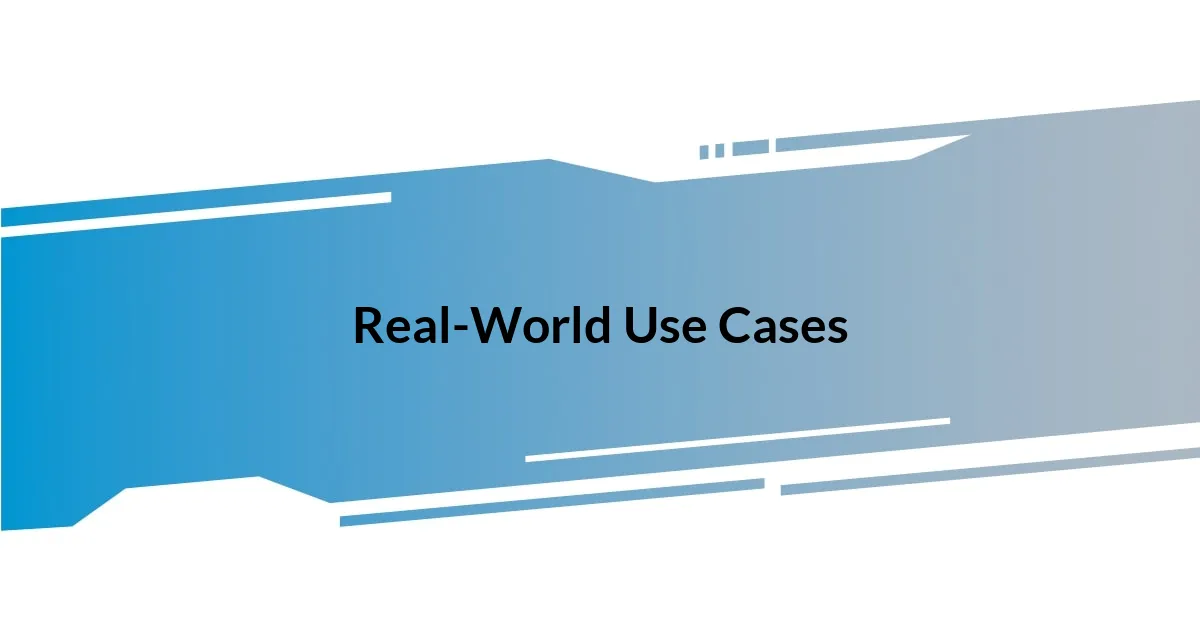
Real-World Use Cases
When I think about real-world applications of GraphQL, I can’t help but remember a project I worked on for an e-commerce platform. The diverse product categories and their intricate relationships made REST cumbersome, as we had to handle multiple API endpoints just to gather related data. Switching to GraphQL was empowering—the ability to request only what I needed made the data fetching process not just efficient, but also quite transformative for user experience. Isn’t it remarkable how a more streamlined approach can elevate both developer productivity and customer satisfaction?
Another vivid example is a social media app I contributed to. The team faced challenges with scaling; as user interactions grew, using REST meant constantly managing and optimizing several endpoints. With GraphQL, we simplified our approach, allowing users to fetch their feeds and notifications in a single request. I still reflect on how that change not only boosted performance but also fundamentally altered how users engaged with the app. It’s amazing how small shifts in data querying can lead to such a substantial impact on usability.
In my experience with mobile applications, particularly a fitness tracker app, GraphQL really stood out. Users were often on the move, and I realized they craved quick access to specific metrics without unnecessary lag. By implementing GraphQL, we enabled users to pull precisely the data points they needed about their workouts, which reduced load times significantly. It felt incredibly satisfying to see how that focus on user-centric data fetching fostered greater engagement and helped users reach their goals more effectively. How empowering is it to create a tool that genuinely responds to users’ immediate needs?